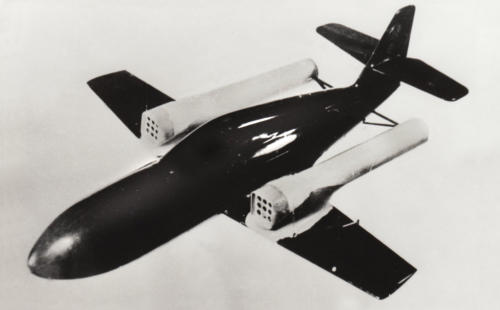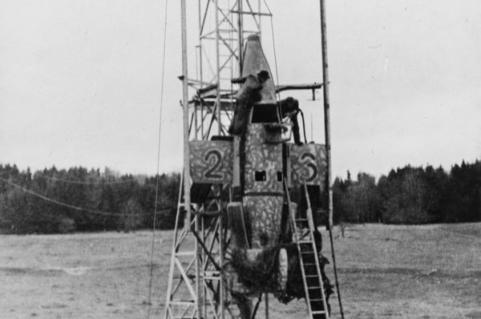
The "Aerospace History
Files" series continues!
There are a large number of exciting topics
that are being prepared for publication.
Some stories are completely unknown, some
have already been presented, but from
different perspectives, and now show new
aspects.
You can look forward to this
publications:
What to expect next…
Messerschmitt Me 262 two seat night fighters
and trainers
The world’s first jet night fighter wasn‘t just a Messerschmitt Me 262 trainer
aircraft with additional radar equipment. The history of the 262 two-seater is
much more complex.
And much more. The publication does not necessarily take place in this order!








German spaceflight dreams 1923 - 1945
Germany was definitive the center of the early spaceflight movement.
Here for the first time, pioneers combined the dream of a flight into space
with technical designs. Numerous books about spaceflight and some
great, lavishly produced movies fired the imagination of young people,
many of whom later became real space engineers and built large space-
going rockets.
Messerschmitt Me 328 low cost jet aircraft
The Me 328 was originally planned as a small parasite fighter aircraft for
long-range Luftwaffe bombers. It should protect the bomber over the
target. When the Luftwaffe failed to create a long-range bomber,
Messerschmitt tried to sell the aircraft as a manned anti-ship weapon, as
a cheap jet fighter or as a suicide bomber. By the end of the war, various
concepts for the Me 328 had been studied.
Focke-Wulf Fw 200 Condor - a beauty in peace
and war times
Kurt Tank developed the Condor to be the first trans-atlantic airliner for the
German Lufthansa. But its civil career was short, Hitler started the Second
World War before the Condor could prove its potential for passengers. It
was pressed into the role as a bomber and became the Luftwaffe’s long
range aircraft against alliied shipping.
Silverbird - the Nazi space bomber
In the 1930s, the Austrian space pioneer Eugen Sänger suggested using
rocket planes instead of rockets to fly into space. During the Second
World War, he developed the plan to orbit the earth with such a
spaceplane and bomb the USA. Only a few copies of his work were
published and fell into the hands of the winners. The American military
ignored it, but Stalin was enthusiastic. Years later, the design of the
"silverbird" was the starting point for the development of the space shuttle.
Raketenflugplatz Berlin 1930 - 1934
Unknown to most spaceflight enthusiast, in 1930 in a suburb of Berlin,
young, mostly unemployed space dreamers began experimenting with
liquid-fueled rockets. With hundreds of burn tests and rocket launches,
these dreamers outclassed all other rocket pioneers worldwide. The best
known and most successful became a young student: Wernher von Braun
(right), who had his first experience with rockets here.
V-1 missile: the function analyzed
From 1942 the aviation company Fieseler designed an aircraft without a pilot,
which could bring a bomb into a pre-selected target automatically. The
Fieseler Fi 103 was able to cover around 250 kilometers. Shortly after the
first missions in the summer of 1944, this first cruise-missile in the world was
given the propaganda designation "Retaliation Weapon 1" (V-1). The author's
collaboration in the restoration of a V-1 for a museum opened up new
insights into the function of this missile.
Nazi-UFO - the story behind the myth
The publications (on paper and the Internet) about flying saucers build by
the Nazis can no longer be counted. New, faked evidence or photos are
constantly being added. The aircraft called "Haunebu" is the most famous
representative of the Nazi UFOs. With an anti-gravity engine and the
ability to fly into space, it would have been the Nazis' ultimate secret
weapon. It's time to rid this story of conspiracy theories and let a skilled
aviation historian analyze the facts.
Natter - the Luftwaffe’s last rocket fighter
Since the airfields of the Luftwaffe were constantly bombed from 1944
onwards, the aircraft designer Erich Bachem worked on a vertically
launched rocket fighter. The small plane was made entirely of wood and
was intended to attack Allied bombers with a salvo of missiles. Unmanned
test flights were successful, but the pilot was killed on the first manned
take-off. Then the SS took over the development.
German hypersonic research 1936 - 1945
The history of missiles with speeds faster than Mach 5 began in Germany in
1936. At Kummersdorf, the Wehrmacht test site near Berlin, trials began with
grenades that had additional scramjet engines and finally reached speeds of
up to Mach 6 and ranges of over 250 km. The inventor, Dr. Trommsdorff, in
1944 designed a hypersonic missile that was to reach the USA. The design
impressed the USA and the Soviet Union and led them to develop such
missiles themselves.















